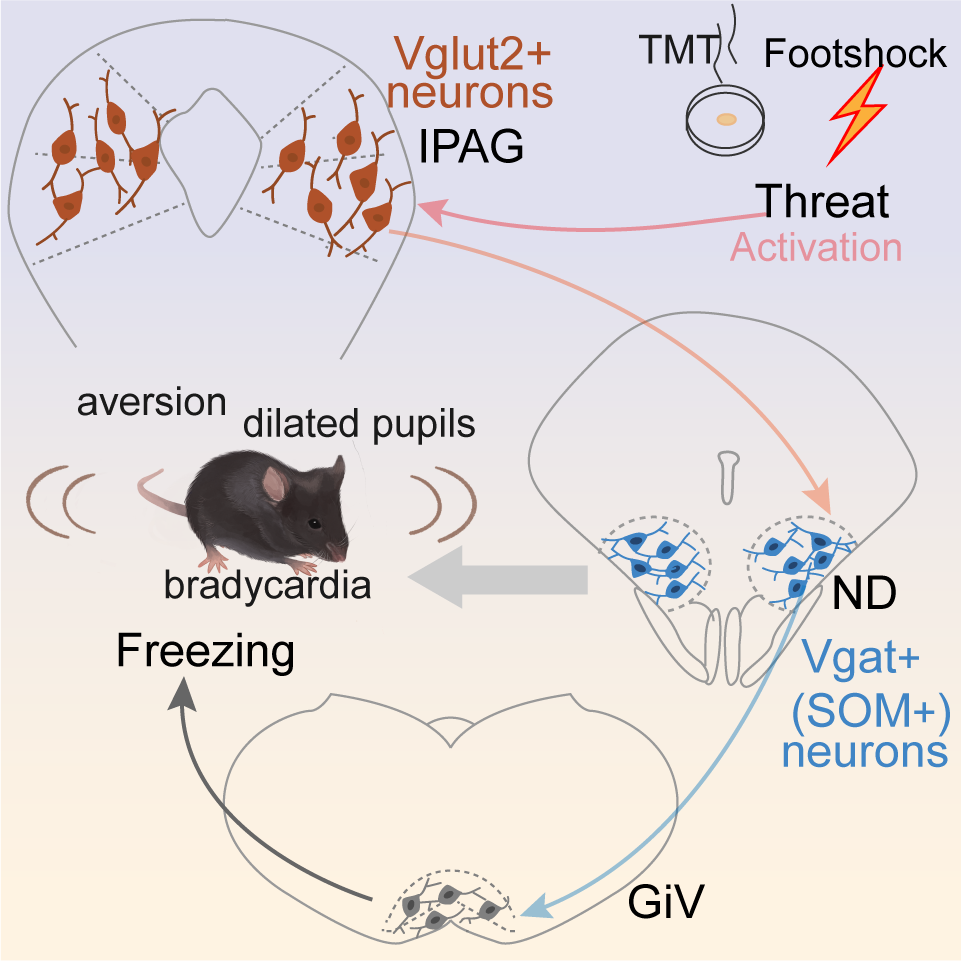Yanqin Yu’s group published in National Science Review on neuromechanism of defensive behavior
The research team led by Prof. Yan-qin Yu has recently published an article titled Control of defensive behavior by the nucleus of Darkschewitsch GABAergic neurons in National Science Review on Mar 5th, Beijing time. This research identifies a previously unrecognized role for the lPAGglu-NDGABA-GiVglu pathway in controlling defensive behaviors.
Threatening situations, such as the presence of a predator or exposure to stimuli predicting imminent or perceived danger, evoke an evolutionarily conserved brain state, fear, which triggers defensive behaviors to avoid or reduce potential harm.The defensive behaviors to threats play a fundamental role in survival. Several brain areas have been implicated in defensive behaviors, including periaqueductal gray, amygdala, hypothalamus. But many nuclei which play important roles in defensive behaviors remain to be discovered.
The nucleus of Darkschewitsch (ND), mainly composed of GABAergic neurons, is recognized as a component of the eye-movement controlling system. However, the functional contribution of ND GABAergic neurons (NDGABA) in animal behavior is largely unknown. Here, we show that NDGABA neurons were selectively activated by different types of fear stimuli, such as predator odor and foot-shock. Optogenetic and chemogenetic manipulations revealed that NDGABA neurons mediate freezing behavior. Moreover, using circuit-based optogenetic and neuroanatomical tracing methods, we identified an excitatory pathway from the lateral periaqueductal grey (lPAG) to the ND that induces freezing by exciting ND inhibitory outputs to the motor-related gigantocellular reticular nucleus, ventral part (GiV). Together, these findings indicate the NDGABA population as a novel hub for controlling defensive response by relaying fearful information from lPAG to GiV, a mechanism critical for understanding how the freezing behavior is encoded in the mammalian brain. Our results advance the current understanding of how threats selectively trigger freezing, a specific defensive response, via the lPAGGlu-NDGABA-GiVGlu circuitry and provide precise anatomical and functional information that is important for the discovery and development of new therapeutic interventions for mood disorders.

Prof. Yan-qin Yu from Zhejiang University School of Medicine is the main corresponding author. Prof. Hongbin Yang from Zhejiang University MOE Frontier Science Center for Brain Science & Brain-Machine Integration is co-corresponding author. This research was strongly supported by Prof. Shumin Duan from Zhejiang University School of Medicine. Dr. Huiying Zhao, Jinrong Liu and Yujin Shao are the first authors. This work was mainly supported by STI2030-Major Projects and the National Natural Science Foundation of China.







